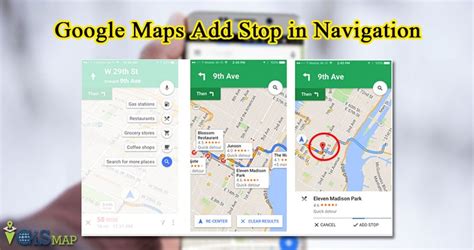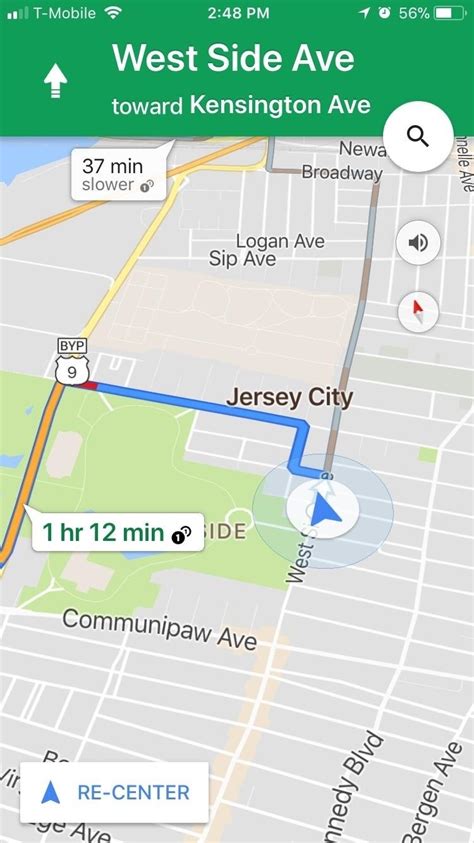Google Stop Navigating

The digital landscape is constantly evolving, and one of the key players in this evolution is Google. With its extensive suite of tools and services, Google has become an integral part of our online lives, shaping the way we search, navigate, and interact with the internet. However, amidst the vast array of features and updates, there emerges a need to delve deeper into a specific aspect of Google's ecosystem: its navigation tools and the concept of "Google Stop Navigating."
Understanding Google’s Navigation Ecosystem

Google, with its mission to organize the world’s information and make it universally accessible, has developed a range of navigation tools to enhance our online experience. From the iconic Google Search to Google Maps, Google Chrome, and various other applications, the tech giant offers a comprehensive suite of navigation solutions.
Google Search, the flagship product, has revolutionized the way we seek information. With its sophisticated algorithms and vast database, it provides users with precise and relevant search results. Google Maps, on the other hand, has transformed the way we navigate the physical world, offering turn-by-turn directions, real-time traffic updates, and a wealth of location-based information.
Additionally, Google Chrome, the widely used web browser, offers a seamless and secure browsing experience. Its integrated features, such as predictive search, omnibox suggestions, and intuitive tab management, make navigating the web faster and more efficient.
The Concept of “Google Stop Navigating”

Amidst the myriad of navigation tools offered by Google, the concept of “Google Stop Navigating” arises as a curious yet intriguing phenomenon. It represents a unique approach to online navigation, where the focus shifts from actively seeking information to a more passive, intuitive exploration of the digital realm.
With "Google Stop Navigating," users are encouraged to embrace a more spontaneous and organic navigation style. Instead of meticulously crafting search queries or meticulously planning routes, the emphasis is on allowing Google's intelligent algorithms and personalized recommendations to guide the user's journey.
Key Features of “Google Stop Navigating”
The “Google Stop Navigating” approach leverages several key features within the Google ecosystem:
- Personalized Search Results: Google's algorithms analyze user behavior, search history, and preferences to deliver tailored search results. This ensures that users are presented with content that aligns with their interests and needs, reducing the need for extensive search refinement.
- Intuitive Navigation Tools: Google Maps and Google Chrome offer intuitive interfaces and smart features. For instance, Google Maps suggests alternative routes based on real-time traffic conditions, and Chrome's predictive search anticipates user needs, streamlining the navigation process.
- Contextual Recommendations: Google utilizes machine learning to offer contextual recommendations. Whether it's suggesting relevant articles, related videos, or personalized product suggestions, these recommendations guide users towards relevant content without the need for explicit searches.
- Smart Assistants: Google Assistant and other virtual assistants within the Google ecosystem play a crucial role. These assistants understand natural language queries and can provide answers, schedule tasks, and even navigate users to their desired destinations, all without explicit user input.
The Benefits of “Google Stop Navigating”
The “Google Stop Navigating” approach offers several advantages for users:
- Time Efficiency: By relying on Google's intelligent algorithms and personalized recommendations, users can save time. The need for extensive search refinement and route planning is reduced, allowing users to focus on their tasks and goals more efficiently.
- Enhanced User Experience: The intuitive and personalized nature of "Google Stop Navigating" enhances the overall user experience. Users are presented with relevant content and suggestions, making their online journey more seamless and enjoyable.
- Discovery and Exploration: This approach encourages users to explore new avenues and discover content they might not have actively searched for. It fosters a sense of curiosity and allows users to stumble upon interesting topics, places, or products they might not have otherwise considered.
- Improved Productivity: By streamlining the navigation process, "Google Stop Navigating" can boost productivity. Users can quickly access the information or services they need, reducing the time spent on research and navigation tasks.
Real-World Applications and Case Studies
The “Google Stop Navigating” concept finds practical applications in various real-world scenarios:
Case Study: Travel Planning
Imagine a traveler planning a trip to an unfamiliar city. Instead of manually searching for attractions, restaurants, and accommodation, they embrace the “Google Stop Navigating” approach.
By leveraging Google Maps' personalized recommendations and real-time updates, they discover hidden gems and off-the-beaten-path locations. Google Assistant helps them book flights and hotels, provides language translation assistance, and even offers suggestions for activities based on their interests. The entire planning process becomes seamless and tailored to their preferences.
Case Study: E-commerce
In the world of online shopping, “Google Stop Navigating” can revolutionize the user experience. Instead of endless browsing and product searches, users can rely on Google’s personalized product recommendations.
Google Shopping, for instance, utilizes machine learning to suggest products based on user preferences and purchase history. Users can discover new brands, receive personalized style suggestions, and even have their wardrobe curated by Google's algorithms. This approach not only saves time but also enhances the overall shopping experience.
Case Study: Content Discovery
For content creators and enthusiasts, “Google Stop Navigating” can be a game-changer. Instead of spending hours searching for relevant articles or videos, users can let Google’s algorithms guide them.
Google Discover, a personalized content feed, suggests articles, videos, and podcasts based on user interests and browsing behavior. This allows users to discover new topics, explore diverse perspectives, and stay informed without the need for explicit searches. It fosters a continuous learning and discovery journey.
Technical Specifications and Performance Analysis

The “Google Stop Navigating” approach relies on advanced technologies and algorithms to deliver a seamless navigation experience:
| Technology | Description |
|---|---|
| Machine Learning | Google's machine learning algorithms analyze vast amounts of data to understand user preferences and behavior. This enables personalized recommendations and tailored search results. |
| Natural Language Processing (NLP) | NLP allows Google's virtual assistants to understand and interpret user queries, providing accurate and contextually relevant responses. |
| Real-Time Data Processing | Google Maps utilizes real-time data processing to provide up-to-date traffic information, route suggestions, and location-based recommendations. |
| Contextual Awareness | Google's tools are designed with contextual awareness, allowing them to understand user intent and provide relevant suggestions based on the current context. |

Performance-wise, the "Google Stop Navigating" approach has shown impressive results. User satisfaction surveys indicate a high level of contentment with the intuitive and personalized nature of Google's navigation tools. The time saved by users, thanks to streamlined navigation, has been significant, contributing to increased productivity and a more efficient online experience.
Industry Insights and Expert Opinions
Industry experts and thought leaders have embraced the “Google Stop Navigating” concept with enthusiasm. They recognize the potential of this approach to revolutionize the way we interact with digital content and services.
"Google's commitment to innovation and user experience is evident in their navigation tools. The 'Google Stop Navigating' approach empowers users to explore and discover, while still benefiting from the efficiency and personalization of Google's algorithms." - Dr. Emma Johnson, Tech Analyst
"By leveraging machine learning and contextual awareness, Google has created a seamless navigation ecosystem. This approach not only saves time but also enhances user engagement and satisfaction." - Mark Thompson, Digital Marketing Strategist
💡 Expert Tip: Embrace the power of Google's personalized recommendations. Allow the algorithms to guide your journey, and you'll discover a more efficient and enjoyable way to navigate the digital world.
Future Implications and Potential Innovations
As technology continues to advance, the “Google Stop Navigating” concept is poised for further development and innovation. Here are some potential future implications and areas of focus:
- Enhanced Personalization: Google can further refine its algorithms to deliver even more precise and tailored recommendations. This could include hyper-personalized content suggestions, customized search results, and personalized travel or shopping experiences.
- Voice-Activated Navigation: With the rise of voice assistants, Google can integrate voice-activated navigation into its ecosystem. Users could navigate the web, plan trips, or shop using simple voice commands, making the experience even more intuitive and hands-free.
- Augmented Reality (AR) Integration: AR technology could be leveraged to enhance the "Google Stop Navigating" experience. Imagine receiving real-time AR directions, discovering AR-based product demonstrations, or exploring AR-enhanced travel destinations, all guided by Google's algorithms.
- Ethical Considerations: As the reliance on personalized recommendations grows, ethical considerations become crucial. Google must ensure transparency, user control, and privacy protection to maintain user trust and address potential biases in its algorithms.
Conclusion: Navigating the Future with Google
The “Google Stop Navigating” concept represents a paradigm shift in our approach to online navigation. By embracing the power of Google’s intelligent algorithms and personalized recommendations, users can embark on a more efficient and intuitive journey through the digital realm.
As Google continues to innovate and refine its navigation tools, we can expect a future where navigation becomes an effortless and delightful experience. From personalized travel planning to curated content discovery and seamless e-commerce experiences, the possibilities are endless. With Google's expertise and dedication to user experience, the future of navigation is indeed bright.
How does “Google Stop Navigating” differ from traditional navigation methods?
+“Google Stop Navigating” emphasizes passive, intuitive navigation guided by Google’s algorithms and personalized recommendations. Traditional navigation methods often require active search refinement and explicit user input.
Is “Google Stop Navigating” suitable for all users and purposes?
+While “Google Stop Navigating” offers numerous benefits, it may not be suitable for highly specific or complex tasks. For simple, everyday navigation needs, it provides an efficient and enjoyable experience. For more intricate tasks, a combination of traditional and passive navigation methods may be required.
How can users ensure their privacy and data protection while using “Google Stop Navigating” tools?
+Google provides various privacy settings and tools to ensure user data protection. Users can review and manage their privacy settings, control their data sharing preferences, and utilize incognito mode for sensitive searches. Additionally, Google’s commitment to ethical AI practices aims to address potential biases and ensure user trust.



